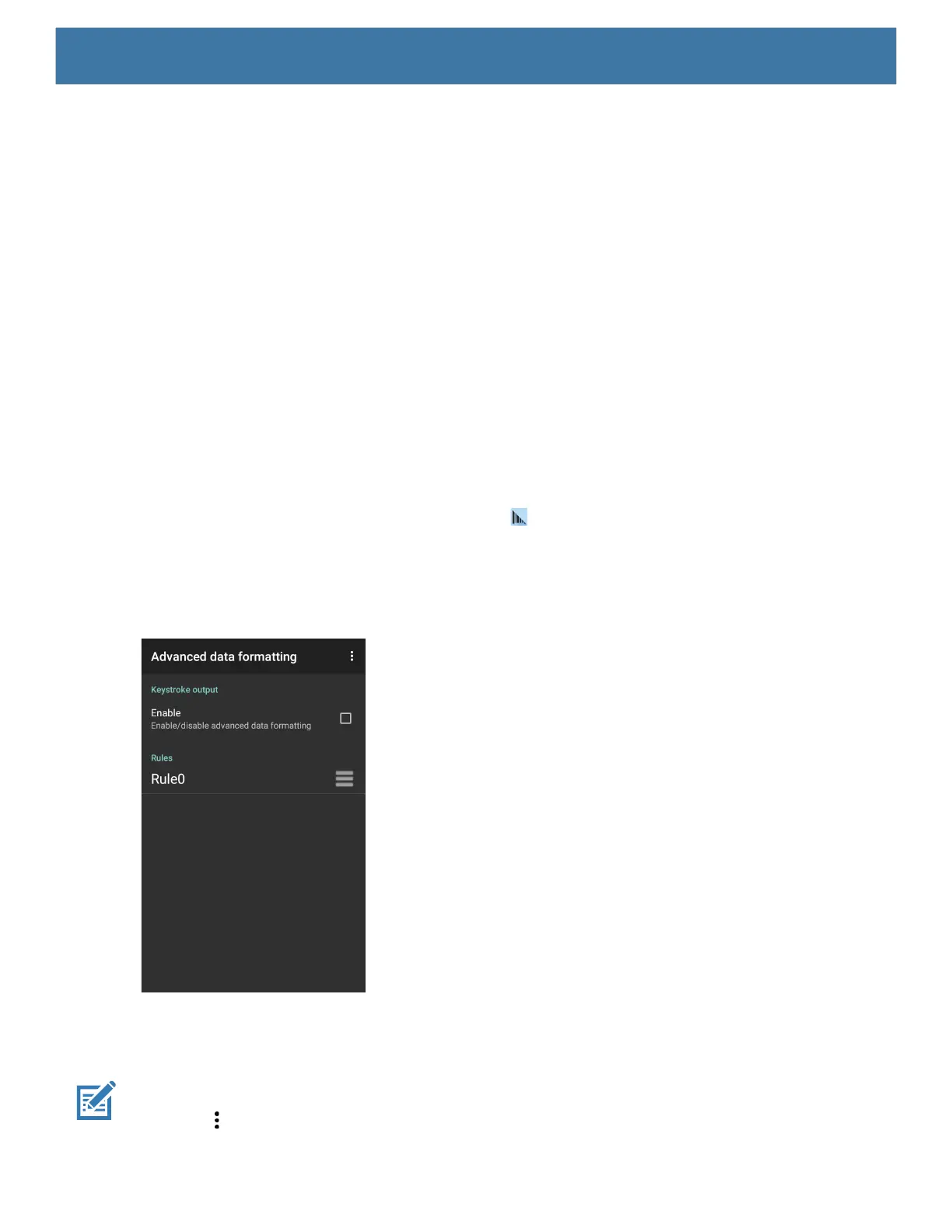DataWedge
82
Generating Advanced Data Formatting Rules
The ADF plug-in applies rules (actions to be performed based on defined criteria) to the data received via an
input plug-in before sending it to the output plug-in.
• Rules - The ADF process plug-in consists of one or more rules. DataWedge formats the output data
according to the first matching rule. A rule is a combination of criteria and a set of actions to be performed,
upon fulfillment of the criteria set in the rule.
• Criteria - Criteria can be set according to Input plug-in, symbology, matching string within the data (at the
specified position) and/or data length. Received data must match the defined criteria in order for the data to
be processed.
• Actions - A set of procedures defined to format data. There are four types of actions which are for formatting
cursor movement, data modification, data sending and delay specifications. An action can be defined to
send the first number of characters to the Output plug-in, pad the output data with spaces or zeros, remove
spaces in data, etc.
Configuring ADF Plug-in
Configuring the ADF plug-in consists of creating a rule, defining the criteria and defining the actions.
1. Swipe up from the bottom of the screen and touch .
2. Touch a DataWedge profile.
3. In Keystroke Output, touch Advanced data formatting.
Figure 69 Advanced Data Formatting Screen
4. Touch the Enable checkbox to enable ADF.
Creating a Rule
NOTE: By default, Rule0, is the only rule in the Rules list.
1. Touch .
